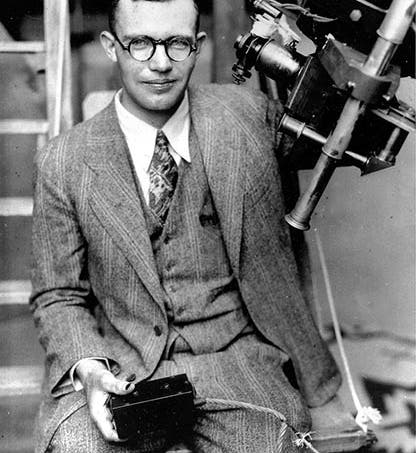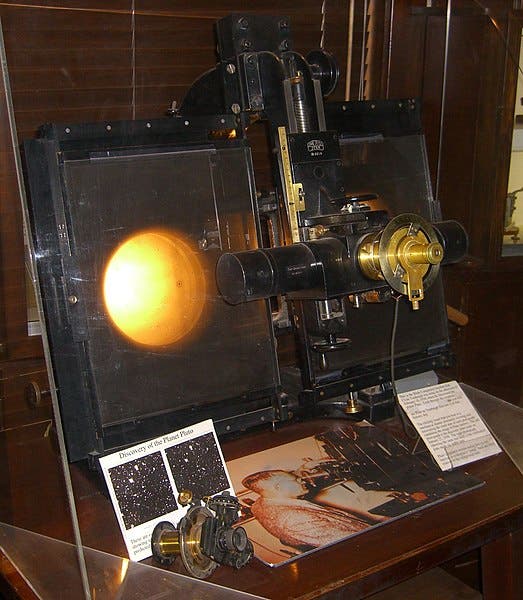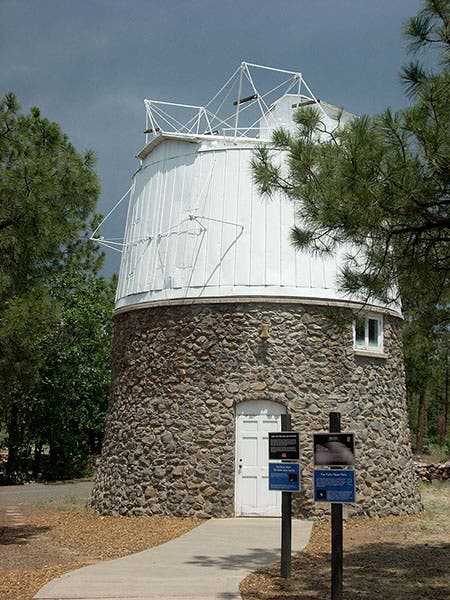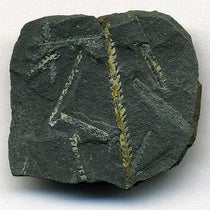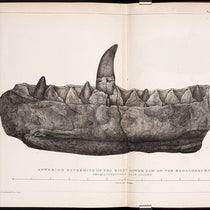Scientist of the Day - Clyde Tombaugh
Clyde Tombaugh, an American astronomer, was born Feb. 4, 1906. Tombaugh was born in Illinois, but he was raised on a farm in Burdett, Kansas, and he would eventually graduate from the University of Kansas in Lawrence in 1936. But before attending KU, he did what few college applicants can put on their resumé: he discovered a new planet. An avid amateur astronomer, Tombaugh had convinced the Lowell Observatory in Flagstaff, Arizona, to take him on as an assistant in 1926, and he was assigned the job of taking and examining photographic plates of the night sky, looking for objects moving against the stars.
On Feb. 18, 1930, Tombaugh was checking two plates of the same area of the sky, taken 6 days apart in late January, and he noticed an small dot that changed location in those 6 days. The discovery was made with an instrument called a blink comparator, which projects the two plates onto one screen and alternates between them, so that any change is readily apparent. Further examination ruled out an asteroid or a comet. On Mar. 13, 1930, the Observatory announced that Tombaugh had discovered a new planet, soon to be called Pluto. He had gone from enthusiastic amateur to international celebrity in a very short time.
Tombaugh had a full life as an astronomer, tolerated his fame as the only living planet discoverer, and finished his career teaching at New Mexico State University. He died in 1997, at the age of 90, and it is perhaps fortunate that he did not live to see his planet demoted to “dwarf planet” status in 2006. His widow claimed that he would have understood the demotion, since the alternatives were to lose one planet, or gain half-a-dozen more, as bodies larger than Pluto were and are being discovered in the outer solar system. If so, Tombaugh was more reasonable than the many plutomaniacs who are still outraged. A portion of Tombaugh's ashes was carried toward Pluto aboard the New Horizons spacecraft, which arrived at the former planet in 2015 and is now on its way out of the solar system. New Horizons also sent back an image of Pluto that we wish Tombaugh had been able to see (fourth image).
Tombaugh’s blink comparator, the device with which he spotted Pluto’s motion on his two photographic plates, is preserved at Lowell Observatory (third image). I think the 13-inch astrograph is still there too – it certainly survives – but they might have moved it from the dome in the photograph below, which is where it was housed when Tombaugh made his historic photographs.
Tombaugh and his wife Patricia founded a Unitarian Universalist church in Las Cruces. The church has since, in his memory, installed a stained-glass window commemorating the life of the farm boy turned astronomer. The couple in the photograph, which was taken in 2015, are Tombaugh’s son Arden and his wife.
Dr. William B. Ashworth, Jr., Consultant for the History of Science, Linda Hall Library and Associate Professor emeritus, Department of History, University of Missouri-Kansas City. Comments or corrections are welcome; please direct to ashworthw@umkc.edu.

